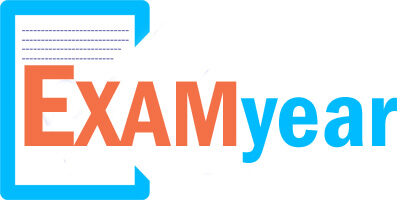Mock Test on Diploma Mechanical Engineering
Interested users can download the Mock Test on Diploma Mechanical Engineering from the links enclosed below. Download the Last 5 Years Mock Test on Diploma Mechanical Engineering Solved along with the Answers of each question.

This Mock Test on Diploma Mechanical Engineering may vary from the Actual paper. Use the Mock Test on Diploma Mechanical Engineering as a reference for the exam preparation. Check the Mock Test on Diploma Mechanical Engineering from this page.
At the bottom of this page, you will find ‘Click here links’ for downloading the Mock Test on Diploma Mechanical Engineering. Click on the required link & download your related Mock Test on Diploma Mechanical Engineering to make as a reference for your scheduled preparation.
Diploma Mechanical Engineering Mock Test Paper
1. A shaft with collars at both ends fitted into a circular hole is a popular example of
(a) rolling pair
(b) turning pair
(c) sliding pair
(d) spherical pair
2. A kinematic chain is called a mechanism, if the number of fixed links is
(a) at most one
(b) at least one
(c) more than one
(d) none of these
3. Frequency of vibrations is usually expressed in
(a) Number of cycles per hour
(b) Number of cycles per second
(c) Number of cycles per minute
(d) Number of cycles per day
4. In a spur gear, the circle on which the involute is generated is called the
(a) base circle
(b) clearance circle
(c) pitch circle
(d) addendum circle
5. The power transmitted by a belt drive is maximum when the ratio of maximum tension in the belt to that of centrifugal tension is
(a) 2
(b) 3
(c) 4
(d) none of these
6. Which one of the following is a dead weight governor?
(a) Watt governor
(b) Hartnell governor
(c) Porter governor
(d) Hartung governor
7. The balancing of rotating and reciprocating parts of an engine is necessary when it runs at
(a) high speed
(b) low speed
(c) moderate speed
(d) all of these
8. When two elements have point or line contact motion, the pair so formed is known as
(a) higher pair
(b) lower pair
(c) closed pair
(d) screw pair
9. Coriolis component of acceleration is considered in case of
(a) quick return motion mechanism
(b) slider crank mechanism
(c) four bar mechanism
(d) none of these
10. Train value of a gear train is
(a) always less than unity
(b) always greater than unity
(c) equal to reciprocal of speed ratio
(d) equal to speed ratio of gear train
11. The product of circular pitch and diameteral pitch is equal to
(a) Module
(b) Unity
(c) Π
(d) 1/ Π
12. At node of the shaft, the vibrations are
(a) Minimum
(b) Maximum
(c) Zero
(d) any value between minimum and maximum
13. Rankine’s theory of failure is applicable for which of the following type of materials?
(a) Brittle
(b) Ductile
(c) Elastic
(d) plastic
14. The rated life of a bearing under a given load (L) is inversely proportional to the
(a) cube of load
(b) cubic root of load
(c) square of load
(d) square root of load
15. Which one of the following bearings is most suitable for carrying very heavy loads with slow speed?
(a) hydrodynamic bearing
(b) ball bearing
(c) roller bearing
(d) hydrostatic bearing
16. In designing a plate clutch, assumption of uniform wear conditions is made because it leads to
(a) real life design
(b) safer design
(c) cost effective design
(d) efficient design
17. During shearing failure of the key, the area under shear is
(a) both length and thickness
(b) both width and thickness
(c) both length and width
(d) only length
18. The largest diameter of an external or internal screw thread is known as
(a) major diameter
(b) minor diameter
(c) root diameter
(d) pitch diameter
19. The failure of material is called fatigue when it falls
(a) below the yield point
(b) below the elastic point
(c) above the yield point
(d) above the elastic point
20. In design analysis, factor of safety is defined as the ratio between material strength and
(a) yield strength
(b) ultimate strength
(c) maximum load
(d) allowable strength
21. When two non-intersecting and non-coplanar shafts are connected by gears, the arrangements are known as
(a) spur gearing
(b) helical gearing
(c) bevel gearing
(d) spiral gearing
22. The efficiency of a welded joint, compared to a riveted joint is
(a) More
(b) Less
(c) equal
(d) unpredictable
23. A cotter joint is used to connect two rods which are in
(a) tension only
(b) compression only
(c) tension and compression
(d) shear only
24. Self-locking is not possible in the case of
(a) simple band brake
(b) differential band brake
(c) simple block brake
(d) internal expanding shoe brake
25. The life of an open belt in comparison to a cross belt is
(a) More
(b) Less
(c) Equal
(d) unpredictable
More Question Set on Mechanical Engineering Diploma MCQs from Various Exam
| Model Question | Old Question |
| Sample Papers | Mock Test |
| Practice Set | Question Bank |
| Important Questions | Test Papers |
| Typical Questions | Selected Questions |
26. In a V-belt drive, the belt touches the pulley
(a) at bottom
(b) at sides only
(c) at bottoms and sides
(d) some cases bottom and some cases sides
27. A shaft directly coupled to a power source is called
(a) line shaft
(b) counter shaft
(c) flexible shaft
(d) jack shaft
28. A round key is used for
(a) light duty
(b) medium duty
(c) heavy duty
(d) extra heavy duty
29. Oldhum coupling is used to connect
(a) aligned shafts
(b) shafts with lateral misalignment
(c) intersecting shafts
(d) parallel shafts
30. The transverse fillet weld joints are designed for
(a) tensile strength
(b) bending strength
(c) compressive strength
(d) shear strength
31. The resistance by which material of a body opposes the deformation is known as
(a) reaction of material
(b) strain of material
(c) resistivity of material
(d) strength of material
32. The ratio of the lateral strain to the linear strain is called
(a) modulus of rigidity
(b) Poisson’s ratio
(c) bulk modulus
(d) modulus of elasticity
33. The load required to produce unit deflection in a spring is called
(a) stiffness constant
(b) strain constant
(c) rigidity constant
(d) torsional constant
34. For a material, Young’s modulus is given as 1.2×105 N/mm2 and Poisson’s ratio is 0.25. The Bulk modulus of the material is
(a) 0.8×105 N/mm2
(b) 1.8×105 N/mm2
(c) 0.5×105 N/mm2
(d) 1.2×105 N/mm2
35. Hooke’s law holds well within the limit of
(a) Polarity
(b) yield point
(c) elasticity
(d) plasticity
36. When a bar is subjected to a change of temperature and its deformation is prevented, the stress induced in the bar is called
(a) tensile stress
(b) compressive stress
(c) shear stress
(d) thermal stress
37. Young’s modulus may be defined as the ratio of stress to strain under
(a) shear condition
(b) lateral condition
(c) linear condition
(d) all of these
38. In a tensile test of a specimen, the ratio of maximum load to the original cross sectional area of the test piece is called
(a) ultimate stress
(b) safe stress
(c) breaking stress
(d) permissible stress
39. The shear stress required to cause plastic deformation of solid metal is called
(a) proof stress
(b) flow stress
(c) ultimate stress
(d) none of these
40. The buckling load for a given column depends on
(a) least radius of gyration
(b) length of column
(c) modulus of elasticity
(d) all of these
41. A beam is loaded as cantilever. If the load at the free end is increased, the failure will occur
(a) at the point of the load
(b) at the middle of the beam
(c) at the fixed end of the beam
(d) at any location of the beam
42. The bending moment diagram for a cantilever beam carrying uniformly distributed load will be a
(a) Rectangle
(b) Triangle
(c) Parabola
(d) hyperbola
43. The materials which exhibit the same elastic properties in all direction are called
(a) homogeneous
(b) inelastic
(c) isotropic
(d) anisotropic
44. Maximum shear stress in a Mohr’s circle is
(a) equal to radius of Mohr’s circle
(b) greater than radius of Mohr’s circle
(c) less than radius of Mohr’s circle
(d) could be any one of these
45. Strain energy stored in a solid circular shaft is proportional to ( GJ is torsional rigidity)
(a) GJ
(b) 1/GJ
(c) 1/(GJ)2
(d) (GJ)2
46. The relation between Young’s modulus (E), bulk modulus (G) and Poisson’s ratio (μ) of an elastic material is
(a) E = 3G (1 – 2μ)
(b) E = 2G (1 – 2μ)
(c) E = 2G (1 + μ)
(d) E = 2G (1 – μ)
47. The maximum bending moment in a simply supported beam carrying a total load W, uniformly distributed on the entire span L is equal to
(a) WL/2
(b) WL/3
(c) WL/4
(d) WL/8
48. Rankine’s formula for determining the load carrying capacity of a column is valid for
(a) long column only
(b) short column only
(c) columns with hinged ends only
(d) all columns
49. The number of nearest neighboring atoms in Face-centred cubic (FCC) crystal is
(a) Six
(b) Eight
(c) Twelve
(d) none of these
50. The property of the material due to which it can cut another material is known as
(a) ductility
(b) malleability
(c) hardness
(d) none of these

